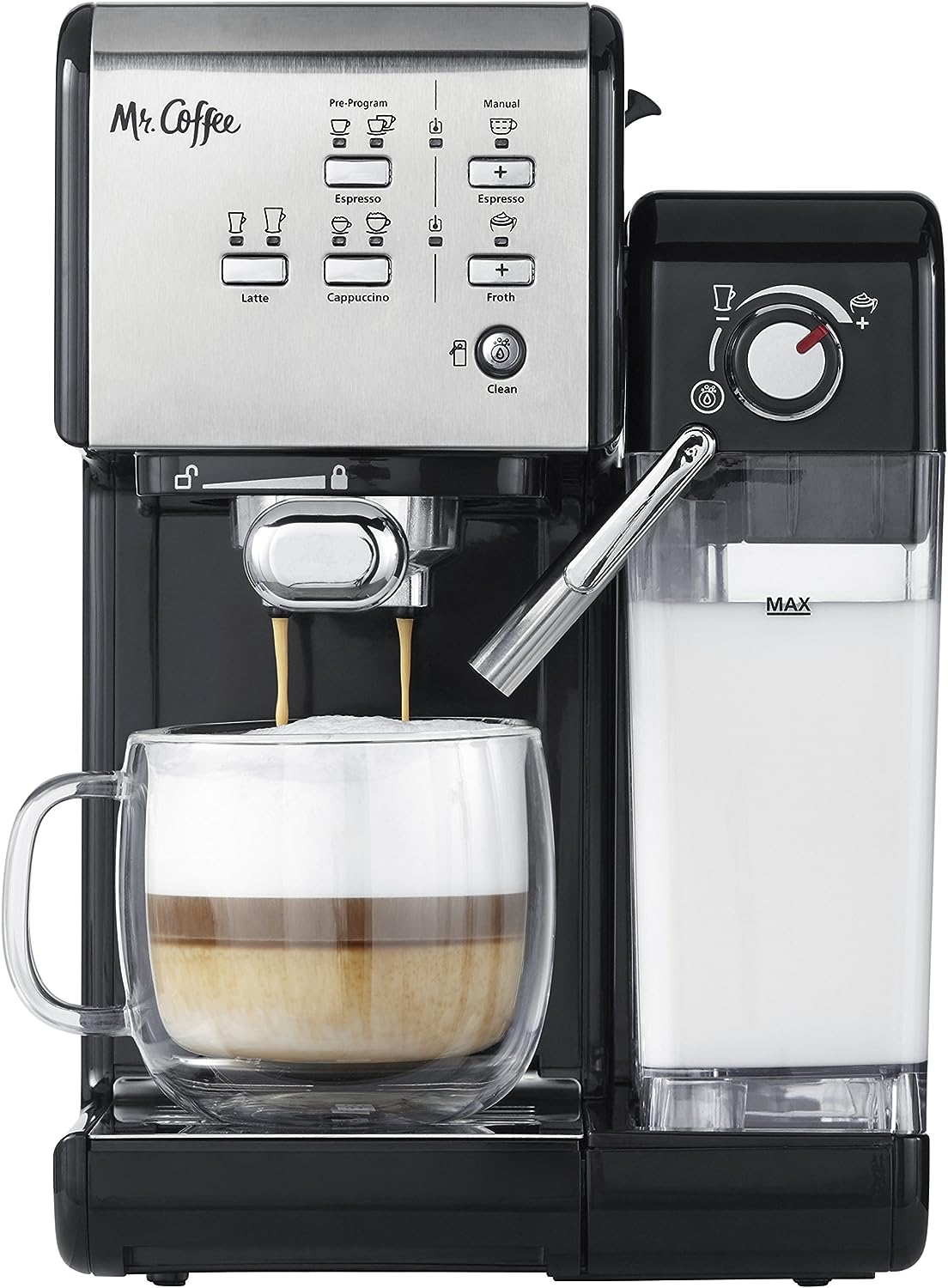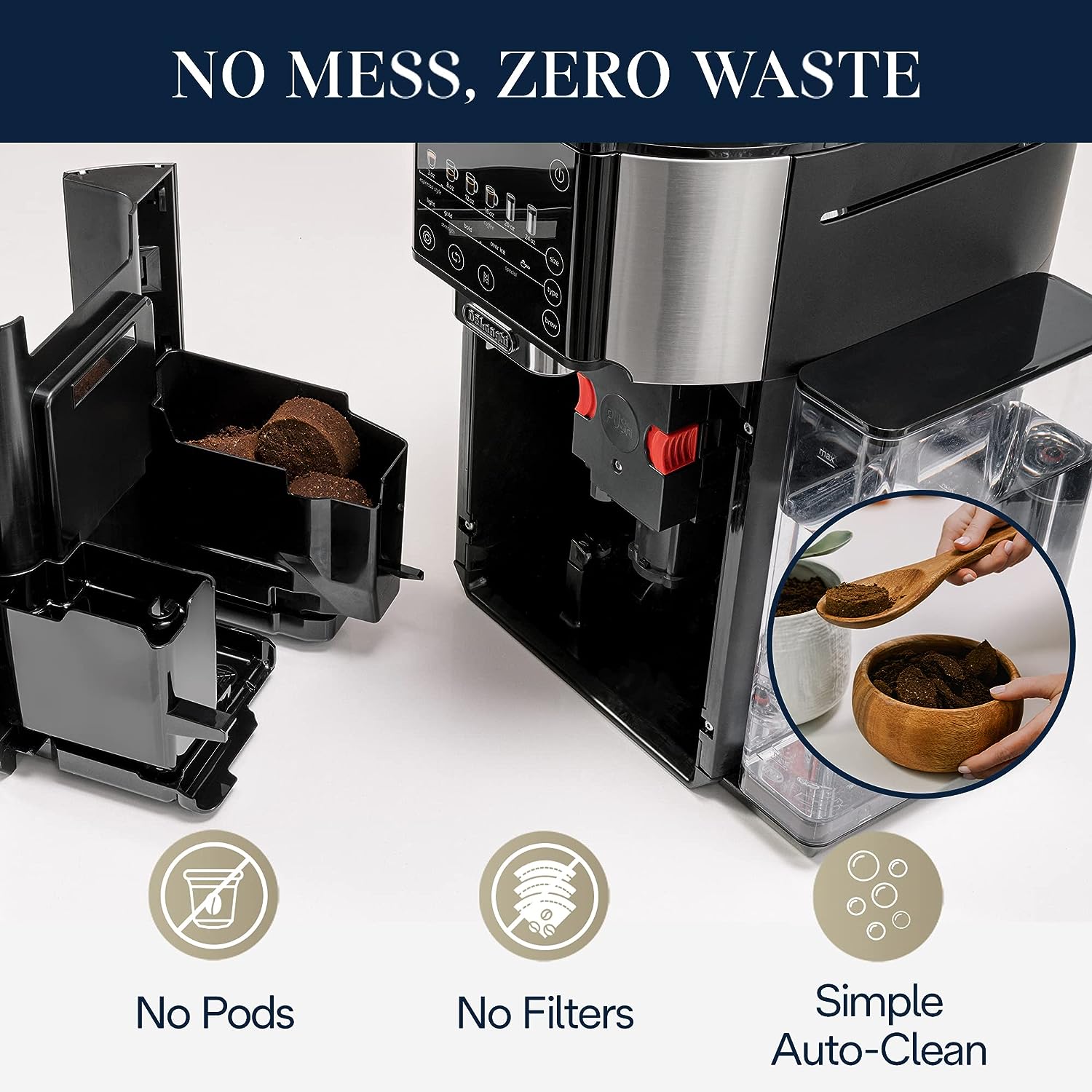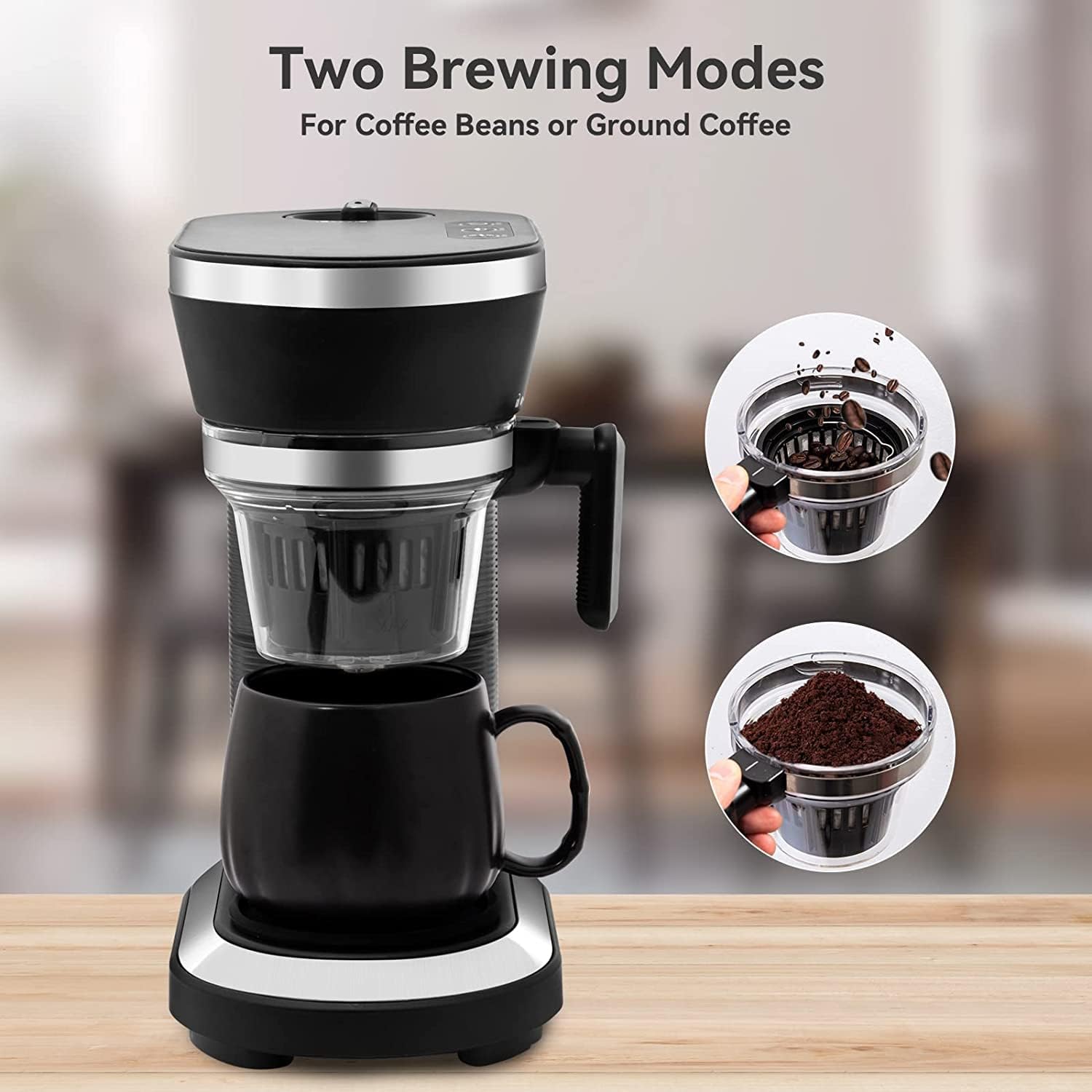Introduction
Ever wondered how a simple push of a button can create the rich, bold flavor of espresso that coffee enthusiasts worldwide crave? Curious about the mechanics behind your favorite caffeine pick-me-up? In this blog post, we’ll explore precisely how an espresso machine works so you can better appreciate your next shot.
From brewing pressure to extracting coffee grounds and frothing milk, get ready for a journey through the world of barista techniques and café culture.
Key Takeaways
- An espresso machine works by pumping hot water through finely-ground coffee to extract the rich, robust flavors and aroma.
- Pressure is key in creating a strong and flavorful shot of espresso, with machines using around 9 bars of pressure for optimal extraction.
- Dual boiler systems ensure consistent heating of water for brewing and steaming milk, allowing baristas to make predictably delicious drinks every time.
- Making the perfect cup of espresso requires careful grinding and tamping of coffee grounds, precise monitoring of pressure gauges during extraction, and mastering techniques for frothing milk with the steam wand.
Basic Working Of An Espresso Machine
The basic working of an espresso machine involves pumping water through coffee grounds, creating pressure for extraction, and heating water with a dual boiler system.
Pumping Water Through Coffee Grounds
One of the core elements in creating a perfect espresso shot is pumping hot water through finely-ground coffee. This process plays a vital role in extracting the rich, robust flavors and aroma from your chosen coffee beans.
As an espresso beginner, it’s essential to understand that using the right water temperature and accurate amount of force significantly impacts overall consistency and taste.
Generally, you can expect approximately 9 bars of pressure – equivalent to nine times atmospheric pressure at sea level – required for optimal extraction.
Creating Pressure For Extraction
In order to get that perfect shot of espresso, pressure is key. Espresso machines use a pump system to create the necessary pressure for extraction.
The pump pushes water through finely-ground coffee at approximately nine bars of pressure, which is equivalent to about 130 pounds per square inch (psi).
This high-pressure process results in a concentrated and flavorful shot of espresso with a layer of crema on top. Without proper pressure, the resulting shot would be weak and lacking in flavor.
Heating Water With A Dual Boiler System
In a traditional espresso machine, heating water is a crucial step in making that perfect shot of espresso. Most machines use a dual boiler system to ensure consistent temperatures for brewing and steaming milk.
One boiler heats the water for brewing while the other heats up steam for frothing milk.
The boilers are controlled by thermostats that maintain precise temperatures to create optimal conditions for brewing and frothing. Some high-end models even have digital displays that allow baristas to monitor temperatures with precision.
By using this method, baristas can guarantee customers consistently high-quality beverages and get creative with latte art or specialty drink combinations without risking under or overheating their brews.
Parts And Functions Of An Espresso Machine
The espresso machine has several essential parts, including the boiler that heats the water, the portafilter attached to the group head where coffee is placed for brewing, and the pump responsible for creating pressure during extraction.
The Boiler, Portafilter, And Group head
The boiler, portafilter, and group head are three essential parts of an espresso machine. The boiler is where water is heated to the appropriate temperature for brewing coffee.
It uses a dual boiler system to heat water in two separate chambers; one for brewing coffee and another for steaming milk.
The group head connects directly to the portafilter and is responsible for pressurizing hot water through it during extraction. The importance of these individual components should not be underestimated as they all work together perfectly in order for you to create delicious cups of espresso shots every time.
The Pump And Steam Wand
The pump and steam wand are two vital components of an espresso machine that help to create the perfect cup of espresso. The pump is responsible for creating the pressure needed to extract the coffee from the grounds, ensuring a rich and flavorful shot each time.
In contrast, the steam wand is used primarily for milk frothing, which gives lattes and cappuccinos their signature creamy texture. Baristas can adjust this wand’s position to vary degrees of frothiness or creaminess by adjusting its height and angle relative to the milk’s surface.
When steaming milk, it’s important not to overheat it as this can negatively impact both its taste and consistency.
Overall, understanding how different components like pumps and steam wands work together will enable you to produce excellent espresso shots consistently every time with any type of machine that has these basic functions.
The Espresso Making Process
To make the perfect espresso shot, baristas follow a precise process involving grinding and tamping the coffee, extracting the espresso shot using pressurized hot water, and frothing milk with the steam wand – continue reading to learn how it’s done step-by-step!
Grinding And Tamping The Coffee
Before brewing your espresso, it’s essential to grind and tamp the coffee correctly. Grinding fresh beans ensures you have a flavorful shot because pre-ground coffee generally loses its aroma and taste over time.
Using a burr grinder produces evenly sized grounds that allow water to seep through them uniformly, resulting in consistent extraction. Tamping the ground coffee means packing it firmly into the portafilter basket using pressure from a tamper.
Proper tamping allows for uniform extraction of flavors by ensuring water passes through each granule at an even rate.
Fun fact: Did you know that some baristas weigh their ground coffee before tamping? This way, they can ensure consistency in every shot pulled from their espresso machine.
Extracting The Espresso Shot
Once the coffee grounds have been tamped, it’s time to extract your espresso shot. The portafilter is locked into place under the group head, and hot water is pumped through the ground coffee at high pressure.
This process typically takes around 20-30 seconds to complete.
It’s essential to note that there are different techniques for extracting an excellent quality espresso shot. Some baristas swear by using precise measurements while others prefer to use their intuition when brewing coffee.
Regardless of which method you choose, pay close attention to the pressure gauge and make sure that it reads around nine bars throughout your extraction process.
Frothing Milk With The Steam Wand
To make a great latte or cappuccino, you need to know how to create the perfect milk foam with your espresso machine’s steam wand. The steam wand is a long, metal tube that extends from the side of an espresso machine and has a small hole at the end.
Begin by filling a pitcher about one-third full with cold milk. Submerge the steam wand in the milk so that only the tip of the wand is below the surface.
Then slowly move down slightly under the surface while keeping swirling until reaches 160°F (70°C) then turn off the switch before removing the pitcher.
With practice, you can learn to create different textures of foam based on what drink you are making or customer preferences.
By mastering this technique, not only will you become closer to becoming an expert home barista but also savor delicious coffee shop-like drinks without having to leave your house!
Conclusion
Understanding the functioning of an espresso machine is the key to truly appreciating the art of brewing espresso. Both commercial machines and your home espresso machine follow the same fundamental principles to create that rich, bold espresso drink we all love.
Every espresso maker, from a modern espresso machine to a single boiler model, primarily works by forcing hot brew water through tightly packed coffee grounds. The heating element and the heat exchanger play a crucial role here, increasing the brew water to the desired brew temperature.
Whether it’s a direct connection to a water line in commercial machines or a refillable reservoir in home machines, the water source is crucial. A valve controls the water flow, allowing the machine to create the right amount of pressure to extract great espresso.
The secret to a fantastic espresso lies in the intricate interplay of heating, pressure, and precise control. It’s the combination of these aspects that allow your espresso machine to deliver consistently delicious espresso, making it an indispensable part of your daily routine. By understanding the behind-the-scenes mechanics, you can appreciate the complexity and beauty of your espresso even more.
Furthermore
, espresso machines work by pumping water through coffee grounds to create pressure for extraction. They also use a dual boiler system to heat water at precise temperatures and create steam pressure for milk frothing.
The parts of an espresso machine include the boiler, portafilter, group head, pump, and steam wand. Baristas follow specific techniques when making espresso shots using ground coffee and filters.
FAQs:
1. What is the process of making espresso with a machine?
The process involves grinding and packing the coffee into a portafilter, which is then inserted into the machine. Hot water under high pressure is then forced through the coffee to extract flavorful oils.
2. How does an espresso machine produce high pressure for brewing?
3. What types of espresso machines are available in the market?
There are three common types: manual lever, semi-automatic and automatic machines that either rely on human intervention or automation based on preset instructions.
4. How do I clean my espresso machine properly?
Cleaning your machine regularly is vital to keep it functioning optimally by removing any buildup, rust or debris inside its components. Use vinegar or specially formulated descaling solutions according to manufacturer guidance for optimal cleaning results.




